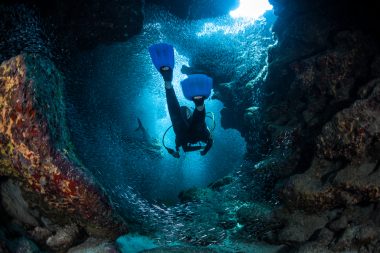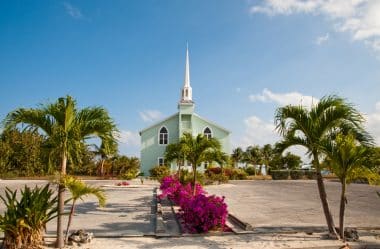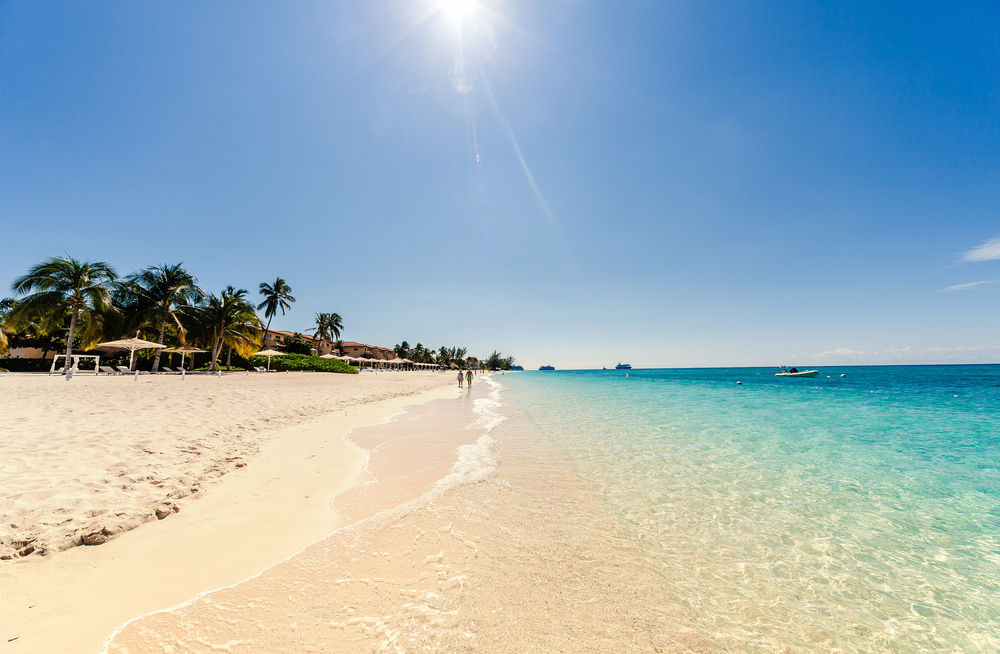Snow-white, seemingly endless sandy beaches, in the background you can hear the sound of the waves rolling out on the beach just a few meters in front of your feet. The sun shines down from the cloudless blue sky and it smells gently of sweet tropical fruits. Large coconuts hang from the palm trees next door. In the middle of the Caribbean Sea between Cuba and Mexico lie the Cayman Islands, which could hardly be more picturesque. If you are looking for paradise on earth, you will find it on the three-part archipelago.
So far, the Cayman Islands have been heard as a tax haven in the evening news , when large companies and personalities used the archipelago as a loophole to save taxes in their home countries. About 200,000 companies are registered on the archipelago.
In the meantime, however, more and more tourists are discovering the picturesquely beautiful Caribbean archipelago of the Greater Antilles for themselves, such as Christopher Columbus, who discovered the islands on his fourth voyage of discovery. The archipelago consists of the large main island of Grand Cayman, Little Cayman and Cayman Brac. The name of the islands goes back to the crocodiles living there, which were initially confused with the caimans. Although they are located in the middle of the British Overseas Territory, all three islands have their own small airport, which makes them easy to reach from the mainland.
Unforgettable holidays
First and foremost, Grand Cayman is known for its beautiful reefs. Since 1978, the species-rich underwater world around the island has been protected by several laws. With fins, diving goggles and snorkel, you dive into a colorful world below sea level on one of the guided snorkeling tours. A unique experience that can no longer be forgotten.

But there are also spots on land that should not be missed. The famous Seven Miles Beach is one of the most famous and beautiful beaches in the Caribbean. The fantastically beautiful fine white coral sand stretches for about ten kilometers, which is bordered by palm trees inland, while on the other side the waves of the crystal clear sea gently roll out on the beach. Although the beach is famous worldwide and the most exclusive resorts on the island are located here, the beach is public and accessible to everyone. The beach has already served as a backdrop for numerous well-known Hollywood productions.
After a nice day at the beach, you should definitely visit the local Heritage Kitchen between Seven Miles Beach and George Town. Here, it is mainly the locals who eat regional delicacies such as freshly caught fish, but also Julia Roberts when she spends her holidays on the island.
If you are not only enthusiastic about beautiful beaches, but also about activities on the water, you should spend your holidays here before November to April. With a constant water temperature of 30 degrees and little moisture in the air, kayaking and chasing the perfect wave on a surfboard is particularly fun.
One of the absolute island specialties that every vacationer should have tried at least once is the rum cake. This is baked in George Town by many different suppliers and is now one of the most successful export items on the island. But it’s not just cake that can be tasted and purchased in the charming little capital. George Town offers numerous shopping opportunities, completely duty-free. Very special is the jewelry, which is offered here by the locals from natural materials, such as shells and corals, at moderate prices. While true Caribbean flair reigns in the alleys during the day, the lively nightlife pulsates here in the evening hours.
A very special place in George Town is the turtle farm. This not only provides visitors with exciting and rare insights into the life of turtles, it also does important work for the conservation of the animal species as a state research station. 45,000 eggs are laid in the station every year.
But there is also a lot to experience and discover culturally on the Cayman Islands. During a visit to the bell tower and the other historic buildings, you can learn a lot about the history of the archipelago. The oldest building on the island at Bodden Town is Pedro St. James Castle. The story is not only long, it is also very eventful, because it is not just a simple inhabited house. Over the years, this has been a courtroom, parliament and prison all in one. Today, the house can be visited from the outside as well as from the inside.
Cayman Brac and Little Cayman

While life pulsates on Grand Cayman, the two small islands of Little Cayman and Cayman Brac seem almost lonely, but no less beautiful. Little Cayman in particular is inhabited by just 120 people and has the largest nature reserve, which is inhabited by many different plants and animal species. Much of the smallest of the three islands is indecisive and covered by tropical rainforest. In fact, nature is so untouched that pelicans and cormorants live here.
About 140 kilometers away from the main island is the middle island of Cayman Brac. An entire cave system near Bodden Town once offered protection and refuge to the dreaded pirates. This system, which ensured the safety of pirates in the 18th century, can still be admired and explored today in the former capital.


